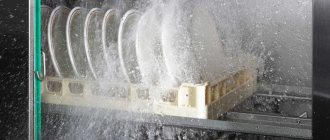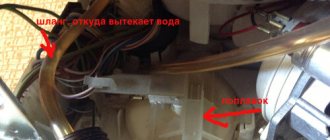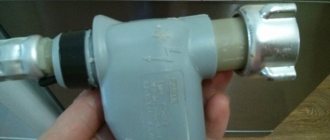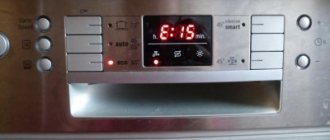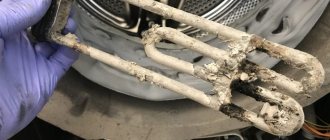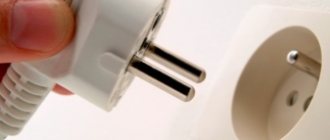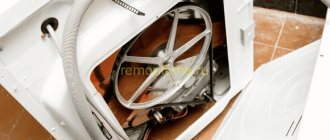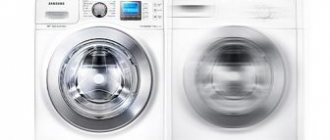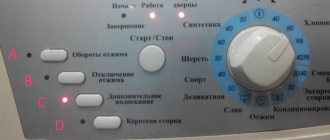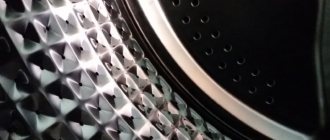Drying dishes in the dishwasher is the last step in the dishwashing program. The final appearance of the washed dishes largely depends on the quality of drying. If drying does not go well, then streaks and water stains remain on the dishes. It is a shame to put such dishes on the sideboard or on the table. The stains on the table sets are especially noticeable.
If the dishwasher does not dry the dishes, this is the first sign of a breakdown or improper use of the machine. Often, poor drying of dishes is the result of an incorrect application of the dishwashing program. There are different machines with different types of drying dishes:
- Condensation drying.
- Turbo drying mode.
- Intensive heat exchange drying.
The first reason is condensation drying.
When your dishwasher is running on condensation drying, it is almost impossible to get a perfect result. If the dishes are clean, but small drops of water remain on them, this is normal with such functionality . The fact is that at the final stage of washing the items are rinsed with hot water. Then it evaporates and settles in the form of drops on the metal of the case and metal utensils. Sometimes drops remain on glass and ceramic objects.
You just have to come to terms with such results. The only advice I can give is to open the door slightly immediately after completing the work cycle . You can open and close it without waiting for a click. After 20-30 minutes, remove the dry utensils.
What is different and what is better
To conclude which type of drying in PMM to prefer, you need to focus on those characteristics that are more important for a given user:
- Intensive or condensation drying is suitable for those people who do not want to spend the family budget on purchasing a premium model, and also agree to put up with long drying times for dishes and the presence of residual moisture on earthenware or glass.
- Turbo drying differs from condensation and intensive high-speed drying of cutlery. Therefore, it will be a suitable option for busy people who prefer to save not money, but personal time.
If the price of the dishwasher does not matter, we can recommend purchasing a unit with zeolite drying (Zeolit®Airflow or Zeolit®-Drying). The operating principle of the device is based on the use of a natural mineral - zeolite. This material has the ability to repeatedly absorb and release moisture, simultaneously heating up and releasing a large amount of heat into the washing cabinet chamber.
Zeolite does not require replacement, maintenance or repair. It will perform its functions until the dishwasher reaches the end of its service life. Appliances with zeolite provide high-quality processing of dishes, since no traces of water remain on its surface. This technology saves energy, but is not yet in great demand, since PMMs with zeolite drying are expensive.
Leading manufacturers of dishwashing equipment are introducing new technologies, constantly improving the process of drying dishes.
Thus, the Electrolux company has developed a system for drying cutlery called AirDry. It provides for automatic opening of the washing chamber door after each program. This technique ensures that the dishes dry quickly under the influence of natural ventilation.
When choosing household appliances, it is worth considering not only the type, but also the class of dryers, which is designated by Latin letters from “A” to “G”. This indicator is assessed by the amount of residual moisture, drips and traces of water on washed dishes. Organizations involved in the sale of dishwashers supply units with drying classes “A” and “B” to our country. In the second option, traces of moisture or single drops are allowed on the washed dishes, and in the highest class “A” dryer the dishes will be completely dry.
- Small-sized dishwasher Beko DTC 36610 W with a power of 1200 W
- Small dishwashers for mini kitchens
- Which salt is best to use for the dishwasher?
- How to drain your dishwasher for the winter
Reason two - malfunctions
Most of the problems that cause poor drying are due to heating problems - this is what many years of practice have demonstrated.
If there is no required heating, the picture will be as follows:
- water does not evaporate from the plates at all during condensation drying;
- Dishes remain wet due to the injection of cold rather than hot air in machines with a fan and turbo dryer.
In addition to wet utensils as such, you can observe additional signs of malfunctions, such as poor quality of washing, accumulation of water in the lower part of the chamber, malfunctions in operating modes, etc.
The heating element has failed
The function of this unit is aimed at heating water and ensuring dry dishes. If it stops working, you will immediately see it: when there is no heat in the machine, traces of food remain on the plates and the device refuses to dry . First of all, it makes sense to check the serviceability of the heaters; a multimeter is used for diagnostics.
What to do if your dishwasher doesn't wash dishes well
Most modern models use a flow-through heating element located in the lower part of the body. Access requires removal of the bottom panel. Here you can see the most common source of malfunction - scale. So I advise you to initially set the correct water hardness and carry out preventive cleaning. If the heater still fails, it is replaced with a new one. There is no other way out here.
Thermal sensor is broken
The sensor measures the water temperature. The received data is sent to the control board, which commands the heater to dry or heat. This unit is located in the opening of the chamber where water is collected, and a turbidity sensor is often located right there.
If the temperature sensor is broken, the brain of the dishwasher does not receive the appropriate information, and the heating element does not receive commands. The dishwasher stops drying and washing dishes efficiently . In the event of such a problem, the sensor is replaced with a new one, for which the wires are removed and repairs are carried out. To check the functionality, the machine is tested in operating mode.
Care and operation of electrical parts and drains of dishwashers
The control module itself is faulty
With such a failure, the machine will not start the drying cycle at all , and no wonder, because the control module is the brain of the device, responsible for performing all functions. It is he who distributes software commands to all key nodes.
The board is placed inside the door. To access the unit, it is disassembled by unscrewing several bolts. Repairs can be different, sometimes it is enough to reprogram the module by flashing it. Other times a complete replacement is required, which will be more expensive.
If the machine is running on turbo drying
When the model operates on this type of drying, which, by the way, is typical for the premium segment, a breakdown may be indicated by the absence of fan sound . But, on the other hand, during the cycle there are various extraneous noises coming from the machine. Hot air stops flowing to the dishes and they remain damp.
As a rule, it is necessary to replace the unit with a working one. I note that in different models the fan is located differently. In AEG devices - in the upper part of the chamber, in Bosch - in the lower part. Access often requires almost complete disassembly of the equipment, which requires only a professional approach .
Why doesn't the dishwasher dry dishes?
In machines with a condensation type, drying occurs due to the fact that after washing the dishes are rinsed with hot water.
The remaining moisture evaporates at high temperature. If water remains on the utensils, it means that the temperature inside the machine was not high enough to dry them. It is worth understanding that evaporation occurs more intensely from metal objects than from ceramic or glass ones. Therefore, the pan dries out faster than a glass or plate. So residual drips after washing and drying in a condenser dishwasher are normal. But if the dishes remain completely damp, this is a sign of a malfunction. In machines of the second type, dishes are dried using hot air blown by a fan. If it is faulty, it blows with a cold stream or does not supply air at all.
By the way, if the dishes remain damp after washing, you may have selected the appropriate program - without drying. Such cycles are provided in many machine models to save time and resources.
conclusions
The source of the dishwasher not drying water could be anything. Sometimes it’s a banal oversight by the manufacturer; I won’t rule out the possibility of a manufacturing defect. In the latter case, I advise you to contact a service center - here you can solve the problem with minimal financial losses.
Even knowing the cause of the breakdown, I advise you to exclude self-repair by contacting a professional . This way, the performance of the equipment will be restored quickly and at a high quality level. Today, the cost of repairs associated with poor drying does not exceed 2.5-3 thousand rubles. I will not tire of repeating that timely prevention will help reduce the risk of malfunctions, so do not neglect the care and descaling of the system.
Dishwasher repair from Top Refit
For any dishwasher malfunctions, call a dishwasher repair specialist from Top Refit. It will accurately determine the reason why the machine does not dry the dishes or does not dry them completely.
You will appreciate our strengths:
- experienced repairmen who know the nuances of household appliances of different brands and models work;
- there is a tool necessary for diagnostics and repair;
- we install original or manufacturer-recommended spare parts; they are always available, there is no need to wait for them;
- We travel to any area of Moscow, including urgently, on the day of your request;
- We work from home, carefully, without damaging the environment;
- we guarantee quality.
Don't put off repairs until later. If there is no or poor drying, using a dishwasher becomes meaningless. If broken parts are not replaced in time, this can lead to more serious problems with the equipment and to the purchase of a new unit.
How to replace the heating element
If the problem is in the heater, buy the part and change the heating element. Before doing this, calculate how profitable the repair will be: if the PMM is old and they won’t give you more than 10,000 rubles for it, then it’s not profitable to buy a spare part. But the decision is yours to make.
How to replace the heating element:
- Open the hopper and remove the baskets.
- Turn off the power to the machine, remove the hoses.
- Remove the spray arm.
- Unscrew the filter.
- Remove the stainless mesh.
- Unscrew the fasteners that hold the pipe and instantaneous water heater.
- Turn the appliance upside down.
- Turn the pump half a turn to the right and pull to remove the part.
- Remove the sensor and set the pump aside.
- The flow heater is held on a rubber mount. Find the fastener and disconnect.
- Then remove the sensor plugs, pipes and remove the burnt heating element.
- Install the new part, reassemble the machine, proceeding in the reverse order.
Option 1. Rinse aid
As is the case with a washing machine that uses powder, a dishwasher will not wash dishes without the use of special products. Often, the cause of poor laundering is the incorrect use of rinse aid.
Every dishwasher, be it Ariston or Bosch, has a so-called rinse aid supply regulator. A lot depends on its correct settings. So, if you reduce the supply of rinse aid, the dishes will come out dry, but with obvious stains that have not been washed off.
And vice versa, if you sharply increase the supply of rinse aid, the dishes will be spotless, but too wet, with drops and streaks (or you will have to additionally wipe each plate, which is labor-intensive). Therefore, carefully read the instructions for your machine to determine which mode is optimal. In most models, the optimal rinse aid supply mode is set to four.
What to do if Aquastop works, how to unlock it
- Turn off the PMM. Press the on/off button and then remove the plug from the outlet.
- Remove water from the pan. To do this, pull out the machine and tilt it slightly towards you. Alternatively, remove the side of the dishwasher and wipe off the water in the tray with a rag.
- Make sure it is the dishwasher that is leaking. Plug in the machine and start the program again. While washing, observe the operation of the machine and the surrounding plumbing (if it is leaking!). If Aquastop works again, then you need to look for a leak in the machine itself. Did the wash go without any problems? This means that water got into the pan for some external reason: regular (for example, a sewer leak) or one-time (for example, a child spilled water on the floor next to the car).
